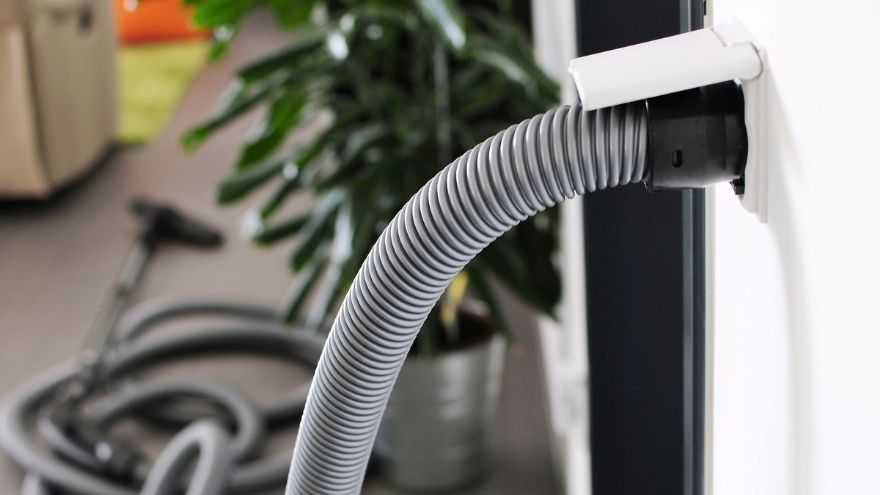Installing a central vacuum cleaner brings a lot of convenience, which increases the comfort of cleaning at home. Such a system consists of a central unit, suction sockets placed in different places and pipes hidden in the walls, connecting all the elements. In order for everything to work perfectly, you need to plan the installation properly, taking into account the location of the central unit, as well as the course of the suction system. In the guide below, we will help you with this, showing you the step-by-step process of planning and installing a central vacuum cleaner. We will show you how to properly arrange the suction sockets and plan the route of the pipes. We will also describe what is most important during installation, thanks to which the central vacuum system will work reliably!

Check out the central vacuum cleaner at the Onninen wholesaler
How to properly plan the installation of a central vacuum cleaner?
Central vacuuming is very practical in every home, but for the entire project to be successful, you need to properly plan the installation of the central unit and the necessary components.
 The most important thing to start with is to determine where to install the central unit. It is best to place it in a utility room, garage or basement, i.e. in places where noise will not be bothersome, and at the same time access to ventilation and power supply will not be difficult. It is also crucial that the unit is located in a place where a simple and short route of the suction installation is possible.
The most important thing to start with is to determine where to install the central unit. It is best to place it in a utility room, garage or basement, i.e. in places where noise will not be bothersome, and at the same time access to ventilation and power supply will not be difficult. It is also crucial that the unit is located in a place where a simple and short route of the suction installation is possible.
Next, we should plan the arrangement of suction sockets so that one suction socket for the central vacuum cleaner can serve the largest possible area of the house. It is important to use the appropriate length of hose that will reach every corner.
Sockets should be placed on the main communication routes - in corridors, near the entrances to residential rooms, but also on each floor of the building. It is equally important to include additional elements, such as automatic dustpans in the kitchen or hallway, which increases the functionality of the entire central vacuum cleaner system.
Planning the location of suction sockets
 Planning the location of suction sockets is very important for the efficiency of the entire system. Sockets connecting pipes in parallel work very efficiently. It is therefore important to arrange them optimally, taking into account factors such as the size of the rooms, the length of the suction hose and the arrangement of furniture.
Planning the location of suction sockets is very important for the efficiency of the entire system. Sockets connecting pipes in parallel work very efficiently. It is therefore important to arrange them optimally, taking into account factors such as the size of the rooms, the length of the suction hose and the arrangement of furniture.
The standard length of the hose is 7 to 9 meters, which allows you to cover a large area from one point. It is good to place the sockets in central places in the house, for example in corridors, which will allow you to service several rooms from one socket.
We shouldn't place them behind doors or in hard-to-reach places. It's best if they're installed at a height of about 30 cm from the floor, because it makes them easier to use. However, if we're talking about multi-story buildings, it's worth planning at least one socket on each floor.
Planning the suction installation route
 A central vacuum cleaner is undoubtedly a great help in every home, so when thinking about making our lives easier, let's think about this solution. When planning the work, we need to carefully develop the course of the suction installation.
A central vacuum cleaner is undoubtedly a great help in every home, so when thinking about making our lives easier, let's think about this solution. When planning the work, we need to carefully develop the course of the suction installation.
The most important thing here is to minimize the length of the pipes and avoid sharp bends, which will reduce the suction force, but can also cause blockages. Suction pipes should be carried out in invisible places, hiding in walls, ceilings or floors. It is important that the installation route is not complicated - it is best if it is straight, which reduces pressure losses.
Choosing the right pipe diameter is also important. Usually, pipes with a diameter of 50 mm are used. They are the standard size in central vacuum systems. Seals and connectors should also be used to ensure the tightness of the installation. In this way, we avoid air leaks. We start the installation from the central unit, planning each branch in such a way that it leads to the furthest suction sockets.
Check out the central vacuum cleaner at the Onninen wholesaler
